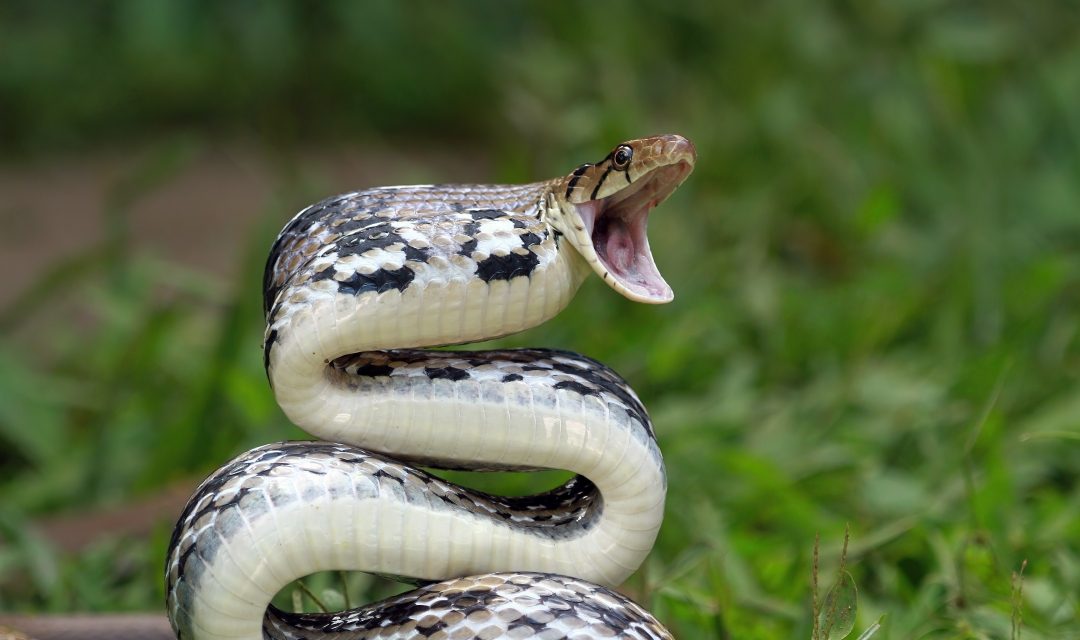First aid for snake bites can be crucial in reducing the severity of the injury. Here are some steps you can take in the event of a snake bite:
Move away from the snake: It is important to create a safe distance between yourself and the snake to prevent further bites.
Stay Calm: Try to stay calm to reduce the spread of poison through your body. Movement can stimulate the circulation of toxins.
Call 911: Call for 911 right away or ask someone to do so. It is important to seek medical help as soon as possible.
Immobilize the bitten part of the body: Try to immobilize the bitten part to prevent the venom from spreading. Keep it still and below the level of the heart, if possible.
Remove jewelry or tight clothing: If possible, remove jewelry or tight clothing from the bite area. Swelling may occur, so it is important to prevent squeezing.
Do not bandage or squeeze: Avoid applying bandages or squeezing above the bite. This can interfere with blood circulation and increase swelling.
Do not use suction devices or induce bleeding: Do not try to suck out the poison or induce bleeding, as this may worsen the situation.
Do not use ice: Avoid applying ice to the bite area, as it can cause additional tissue damage.
The most important step is to seek medical help immediately. Health professionals will be able to assess the severity of the bite and provide the necessary treatment, such as antivenom. Therefore, it is important to remain calm and seek professional medical help quickly.
EPIDEMIOLOGY:
Venomous snakes can be found on all continents except Antarctica. Globally, only 15% of the 3,000 known snake species are poisonous to humans.
MECHANISM OF POISON ACTION:
The venom contains many enzymes and toxins that damage blood vessels and tissues.
Tissue breakdown causes potassium to be released from the cells into the circulation.
Hypokalemia can lead to cardiac arrhythmias.
Myoglobin (muscle breakdown product) causes kidney damage (acute kidney injury).
Leakage of blood vessels leads to edema (peripheral edema, pulmonary edema, hypotension, acidosis).
Coagulation disorders (hyper-/hypocoagulability).
Neurological damage – muscle weakness, respiratory failure.
Direct heart damage – heart failure, arrhythmias.
LOCAL EFFECTS OF THE POISON:
Pain, swelling, bruising, tissue breakdown.
SYSTEMIC EFFECTS:
Bleeding, shock, respiratory failure.
PREVENTION:
It is important to collect as much information as possible about the terrain and the snakes in the area (photos, descriptions).
If possible, bring snakebite treatment equipment, including antivenom.
Dress appropriately (high shoes, thicker clothes, gloves).
Watch the terrain carefully to avoid dangerous situations, such as trying to reach into cavities or between rocks.
Avoid contact with snakes, even if they are dead (bites from severed snake heads have been reported; snake venom can remain active for some time after the snake has died).
A snake’s effective strike distance is roughly half its length.
If you are bitten by a snake, try to get as much information about the snake as possible.
TREATMENT FOR SNAKE BITE:
- Basic first aid
- Place the victim in a comfortable position.
- Examine the bite site, mark the edges of the damaged tissue, and record the time of the bite to monitor the progress of the tissue damage.
- Remove rings, bracelets and similar items due to possible tissue swelling.
- DO NOT use incisions, cutting, heat, ice, ointments, herbs, electricity, alcohol or stimulants as they may worsen the outcome.
- Mechanical vacuuming is not recommended.
- Just cover the bite site with a dry cloth.
- Avoid using pressure bandages and tourniquets.
IMMOBILIZATION UNDER PRESSURE for non-necrotic poisons:
- Apply an elastic bandage from the distal point across the bite, wrapping towards the proximal point as tightly as possible with pressure between 40-70 mmHg (similar to wrapping a bandage on a sprained joint).
- Immobilize with an elastic bandage.
- DO NOT REMOVE the immobilizer until you get to the hospital.
- USE IMMOBILIZATION regardless of the elastic bandage.
- PAIN MANAGEMENT: Paracetamol Do not give aspirin or similar anti-inflammatory drugs (ibuprofen) as they can make bleeding worse.
- If the victim has not vomited and is not nauseous, he can drink a small amount of clear liquid drink.
IF THE POISON GET IN THE EYES:
- Flush the eyes with water or saline solution for 15-20 minutes.



0 Comments